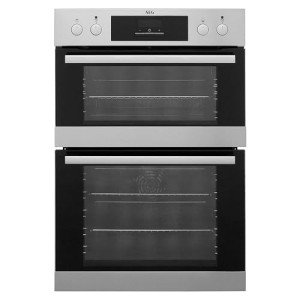The Rise of Built-In Ovens: A Seamless Approach to Modern Cooking
In modern cooking areas, where design aesthetic appeals blend perfectly with functionality, one home appliance sticks out as a real video game changer: the built-in oven. As homeowners and chefs alike continue to look for ingenious services that boost their cooking experience, built-in ovens have ended up being progressively popular. This short article checks out the benefits, factors to consider, and trends surrounding built-in ovens, highlighting why they are a vital feature in contemporary cooking areas.
What is a Built-In Oven?
A built-in oven is a kitchen device developed to be integrated into the cabinets of a kitchen instead of standing alone. Unlike standard freestanding ovens, which can be moved and placed anywhere, built-in ovens can be found in various designs and sizes to fit specifically within designated areas. Available in single or double configurations, these ovens provide a streamlined appearance that complements contemporary kitchen styles.
Advantages of Built-In Ovens
1. Space-Saving Design
One of the most enticing benefits of built-in ovens is their space-saving design. By incorporating the oven into kitchen cabinetry, you can release up valuable counter and floor space. This is especially beneficial in smaller sized cooking areas, where optimizing room is vital. Built-in ovens can be installed at eye level, making them more accessible and lowering the requirement to flex down.
2. Visual Appeal

Built-in ovens contribute to a smooth and cohesive kitchen area style. Offered in various finishes-- such as stainless-steel, black, white, and custom cabinetry-- they can mix seamlessly into the overall decor. This aesthetic appeal boosts the cooking area's visual harmony and elevates the space, creating a contemporary and sophisticated atmosphere.
3. Improved Functionality
Lots of built-in ovens come geared up with sophisticated cooking innovations, such as convection cooking, steam ovens, and clever features. These enhancements permit for versatile cooking options, making it easier to accomplish professional-level results at home. Smart built-in ovens can even link to Wi-Fi, making it possible for users to control the oven remotely, receive notifications, and access a range of cooking programs and dishes.
4. Improved Ventilation
Because built-in ovens can be integrated with kitchen area hoods and ventilation systems, they can help maintain much better air quality and lower cooking odors. This is specifically substantial for those who love to cook with fragrant spices and ingredients, as a reliable ventilation system can keep the kitchen comfy and inviting.
5. Modification Options
Built-in ovens provide a large range of modification choices to suit specific cooking styles and needs. From professional-grade appliances with numerous cooking modes to compact designs for smaller sized cooking areas, homeowners can pick the oven that fits their particular requirements. Many makers also use personalized front panels, enabling you to match the oven's look to your cabinetry for a really merged look.
Considerations When Choosing a Built-In Oven
While built-in ovens have numerous advantages, there are necessary factors to consider to remember before purchasing:
1. Ovens And Hobs -in ovens usually feature a greater cost tag than their freestanding equivalents due to their style and setup requirements. It's crucial to factor in both the cost of the oven and any extra expenditures related to kitchen cabinetry adjustments or setup.
2. Installation Requirements
Setting up a built-in oven typically needs professional help, especially if you require to customize existing kitchen cabinetry. Guarantee that you consider any expenses connected with setup, including labor and potential kitchen cabinetry modifications.
3. Size and Dimensions
Before acquiring a built-in oven, measure the designated area properly to guarantee a proper fit. Built-in ovens come in different sizes and setups, so choosing one that aligns with your requirements and cooking area design is essential.
4. Way of life and Usage
Consider your cooking routines and requires when choosing a built-in oven. If you frequently host large gatherings, a double oven might be more useful. On the other hand, if you have a compact kitchen area, a single-wall oven might be sufficient.
Trends in Built-In Ovens
The cooking area device market is constantly evolving, and built-in ovens are not exempt from emerging patterns. Some current patterns consist of:
Smart Technology Integration: With the rise of smart home technology, built-in ovens now frequently include connection alternatives. This permits users to keep track of cooking development and adjust settings through mobile apps.
Energy Efficiency: As sustainability ends up being a top priority, numerous producers are buying energy-efficient built-in ovens that reduce energy consumption while maintaining efficiency.
Multi-functional Designs: Built-in ovens now provide functions such as air frying, sluggish cooking, and steaming, supplying flexibility that meets a vast array of cooking approaches.
Conclusion
Built-in ovens certainly represent an ideal blend of style, function, and convenience in today's kitchens. As more property owners choose for this modern option, the focus moves to developing a cooking space that is as visually pleasing as it is practical. Whether you are building a brand-new home or remodeling your cooking area, thinking about a built-in oven might elevate your cooking experience and change your cooking area into a trendy and practical haven. With an array of alternatives readily available and continuous innovations in technology, built-in ovens remain a standout choice for both amateur cooks and cooking lovers alike.
